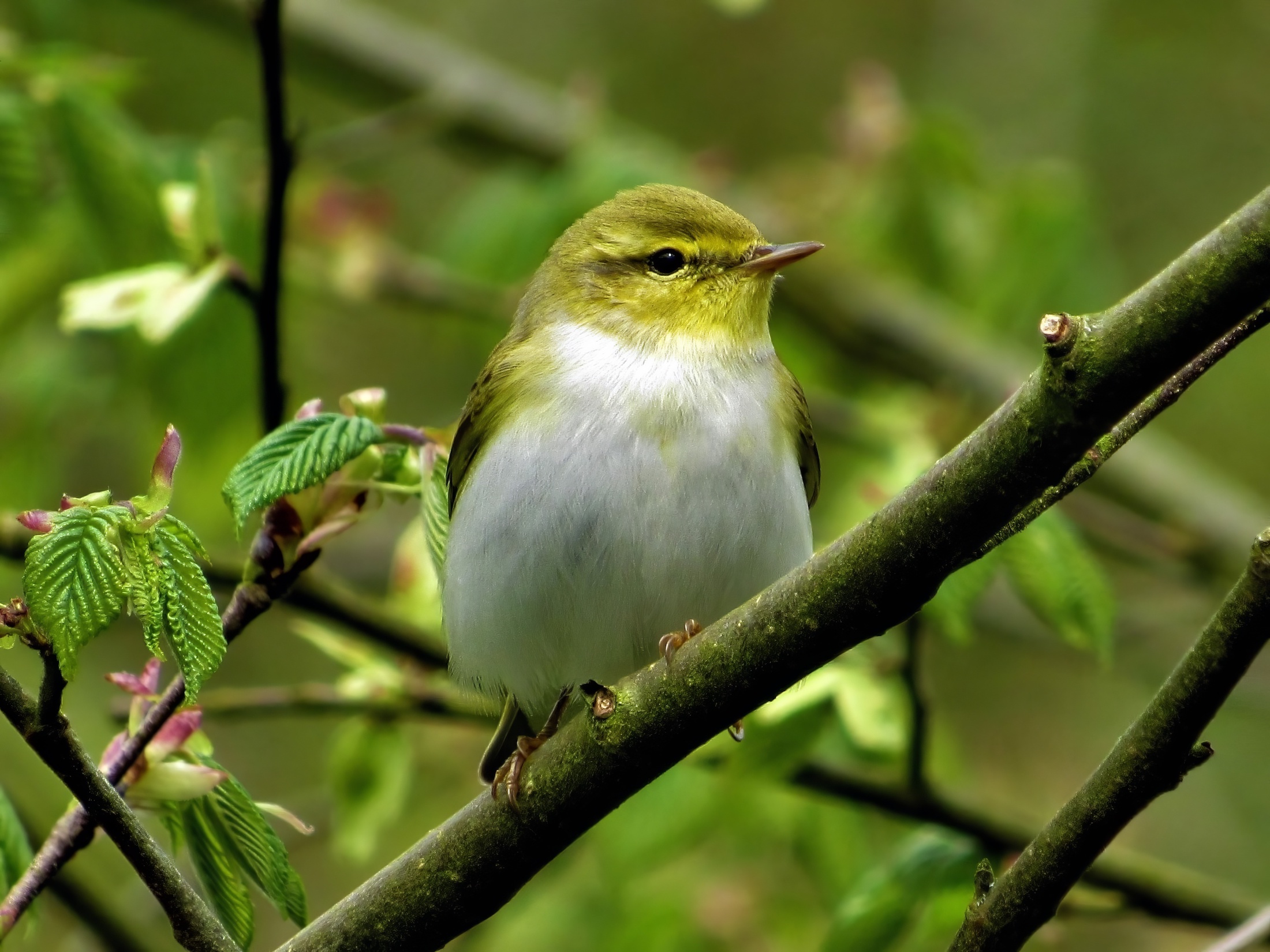Wood Warbler Phylloscopus sibilatrix
Very scarce and declining passage migrant. Formerly bred up until 1951.
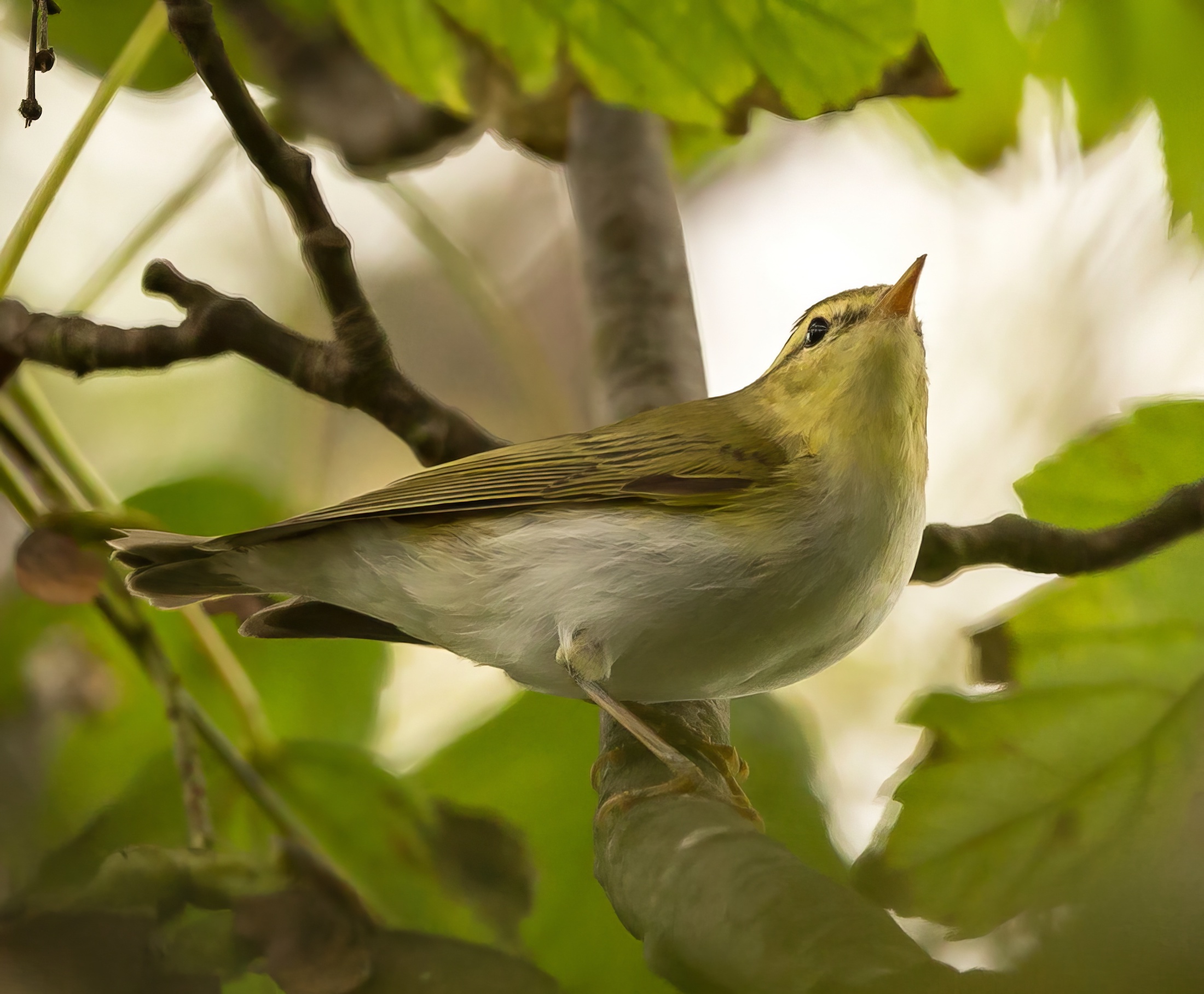
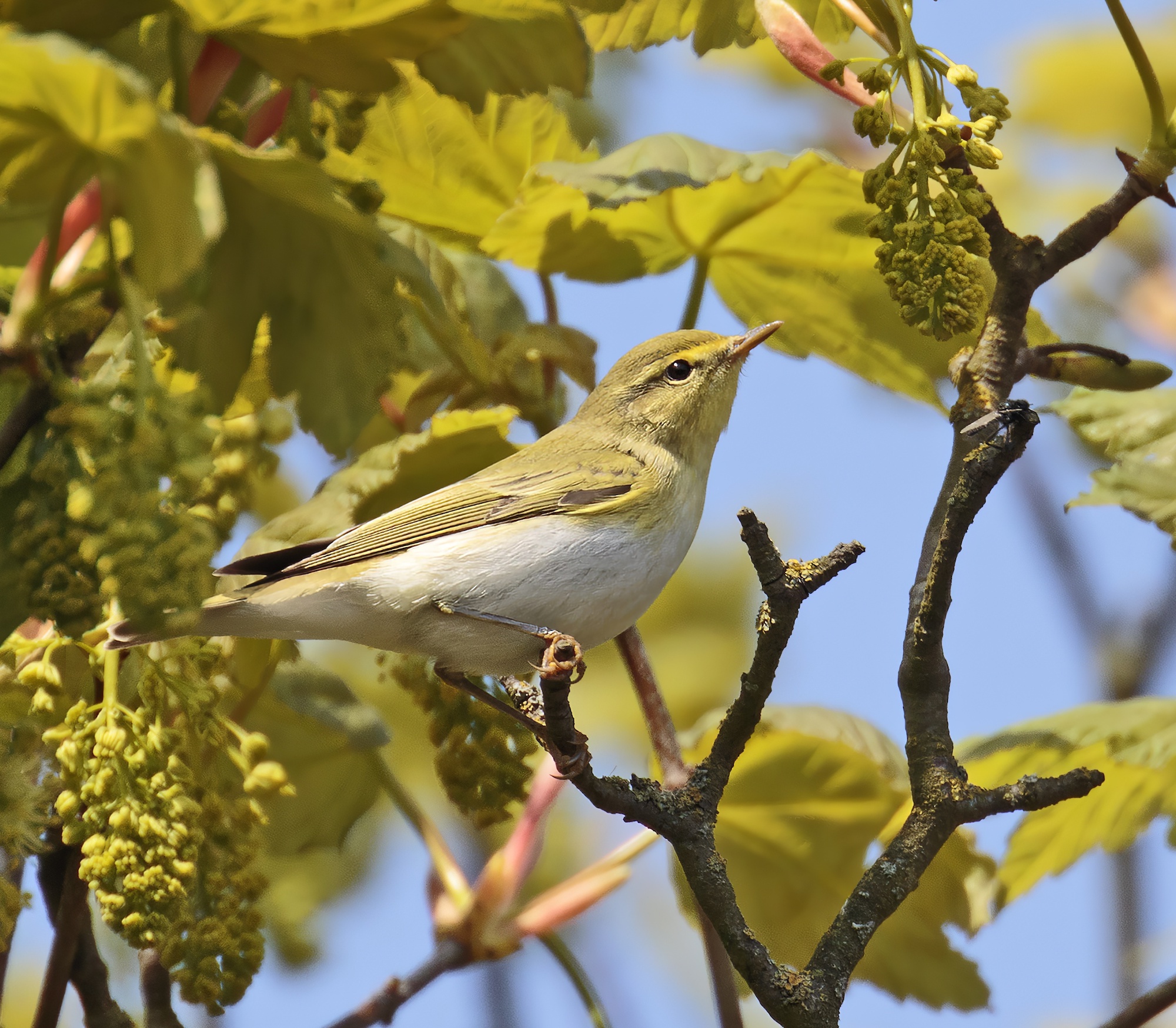
Wood Warblers: left, Sea View Farm, Saltfleetby September 21st 2014 (Barry Clarkson) and centre, May 8th 2016 (Graham Catley); right, Gibraltar Point NNR April 30th 2018 (Ben Ward).
Cordeaux (1872) reported that “this exquisite and delicate bird” was a rare and declining summer visitor in the northeast “found only in old woodlands and parks”. Smith and Cornwallis (1955) report it was formerly local across the county in suitable beech and oak woods. By the 1920s it was confined to the northwest and five pairs bred in Manby Woods near Scunthorpe in 1920. Singing males were reported here till 1951 and since then occasional spring males stop and sing for a few days. Burton Pits was good for them in the 1970s. The species has gradually grown scarcer with the occasional good year. During 1979-1995 there were 10-11 birds per year on average, but later during 1996-2019 it it fell to only 4-5 with a few exceptions, one of which was 2010 when there were 11 records (charts, below). Remarkably, only one of these was a spring record, a singing male on May 1st in Bourne woods. The remaining 10 were all autumn birds between July 4th-August 31st. Five were at Gibraltar Point (two ringed), four at Donna Nook, and one at Humber Bridge viewing area, Barton. The LBR archive indicates extreme dates of April 13th 2005 (Dole Wood LWT reserve, Thurlby) and October 23rd 1988 (North Cotes). Comparison of spring and autumn dates shows that Wood Warblers have tended to occur less in spring and more in autumn in more recent times: 59% of birds were found before mid-July during 1979-1995, but during 1996-2019 this fell to 39%.
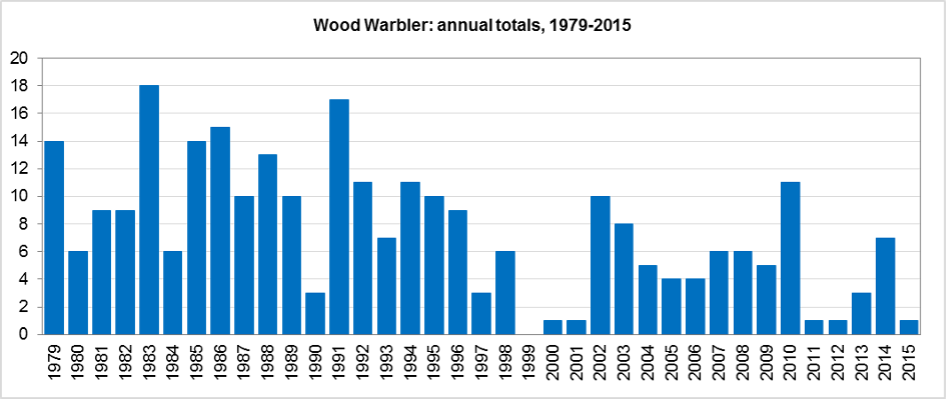
Figure 1: Wood Warbler annual totals, 1979-2015 (Andrew Henderson).
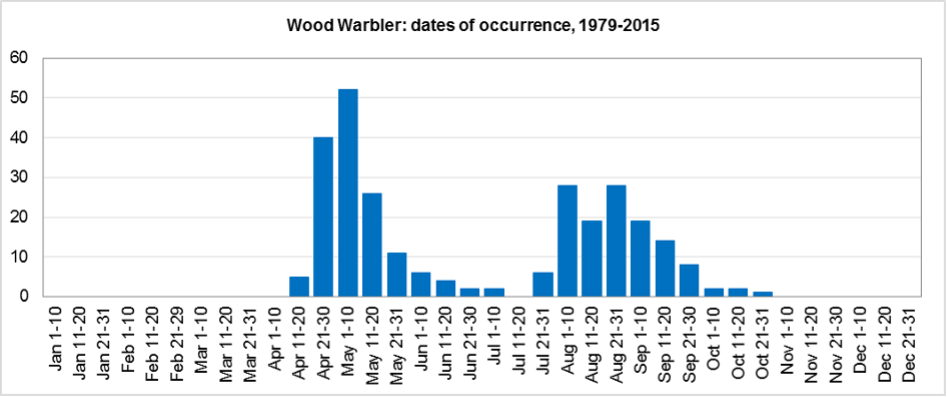
Figure 2: Wood Warbler, 1979-2015: dates of occurrence (Andrew Henderson).
(Account as per new Birds of Lincolnshire (2021), included October 2022)


